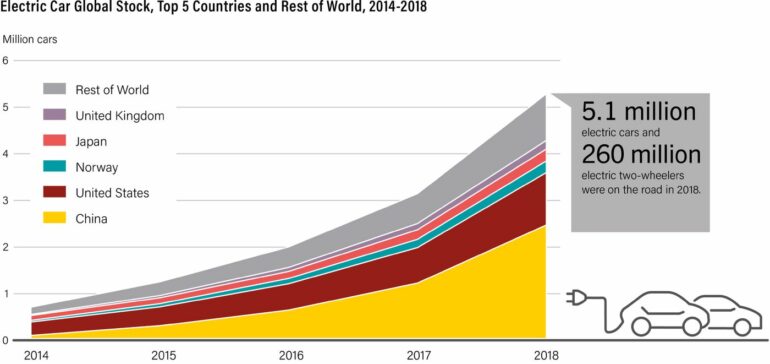Oil and gas prices skyrocketed following the Russian invasion of Ukraine in spring 2022, creating a global energy crisis similar to the oil crisis of the 1970s. While some countries used the price shock to accelerate the transition to cleaner sources of energy, such as wind, solar and geothermal, others have responded by expanding the production of fossil fuels.
A new study appearing this week in the journal Science identifies the political factors that allow some countries to take the lead in adopting cleaner sources of energy while others lag behind. The findings offer important lessons as many governments around the world race to reduce greenhouse gas emissions and limit the devastating impacts of climate change.
“We are really interested in understanding how national differences mediate the responses of countries to the same kind of energy challenge,” said study lead author Jonas Meckling, an associate professor of energy and environmental policy at the University of California, Berkeley. “We found that the political institutions of countries shape how much they can absorb costly policies of all kinds, including costly energy policies.”
By analyzing how different countries responded to the current energy crisis and to the oil crisis of the 1970s, the study reveals how the structure of political institutions can help or hinder the shift to clean energy. Meckling carried out the analysis in collaboration with study co-authors Phillip Y. Lipscy of the University of Toronto, Jared J. Finnegan of University College London, and Florence Metz of the University of Twente, in the Netherlands.
Because policies that promote the transition to cleaner energy technologies are often costly in the short-term, they can garner significant political pushback from constituents, including consumers and corporations. The analysis found that the countries that were most successful at pioneering cleaner energy technologies had political institutions that helped absorb some of this pushback—either by insulating policymakers from political opposition or by compensating consumers and corporations for the extra costs associated with adopting new technologies.
For example, Meckling said, many countries in continental and northern Europe have created institutions that allow policymakers to insulate themselves from pushback by voters or lobbyists or to pay off constituencies impacted by the transition. As a result, many of these countries have been more successful at absorbing the costs associated with transitioning to a clean energy system, such as investing in greater wind capacity or upgrading transmission grids.
Meanwhile, countries that lack such institutions, such as the U.S., Australia and Canada, often follow market-driven transitions, waiting for the price of new technologies to drop before adopting them.
“We can expect that countries that can pursue the insulation or compensation path will be early public investors in these very costly technologies that we need for decarbonization, such as hydrogen fuel cells and carbon removal technologies,” Meckling said. “But once these new technologies become cost competitive in the market, then countries like the U.S. can respond relatively rapidly because they are so sensitive to price signals.”
One way to help insulate policymakers from political pushback is to hand over regulatory power to independent agencies that are less subject to the demands of voters or lobbyists. The California Air Resources Board (CARB), a relatively autonomous agency that has been tasked with implementing many of California’s climate goals, is a prime example of such an institution. Thanks in part to CARB, California is often considered a global leader in limiting greenhouse gas emissions, despite being a state within the U.S.
Germany, another global climate leader, is instead using compensation to achieve its ambitious climate goals. For example, the Coal Compromise brought together disparate groups—including environmentalists, coal executives, trade unions and leaders from coal mining regions—to agree on a plan to phase out coal by the year 2038. To achieve this goal, the country will provide economic support to workers and regional economies that are dependent on coal, while bolstering the job market in other industries.
“We want to show that it’s not just resource endowments that shape how countries respond to energy crises, it’s also politics,” Meckling said.
The U.S., as a whole, does not have strong institutions in place to absorb political opposition to costly energy policies. However, Meckling said that policymakers can still drive the energy transition forward by leveraging the leadership of states like California by focusing on policies that have more dispersed costs and less political opposition—such as support for energy research and development—and by clearing the way for the market to adopt new technologies once the cost has gone done.
“Countries like the U.S. that do not have these institutions should at least focus on removing barriers once these clean technologies become cost competitive,” Meckling said. “What they can do is reduce the cost for market actors.”
More information:
Jonas Meckling, Why nations lead or lag in energy transitions, Science (2022). DOI: 10.1126/science.adc9973. www.science.org/doi/10.1126/science.adc9973
Provided by
University of California – Berkeley
Citation:
Why some countries are leading the shift to green energy (2022, October 6)



